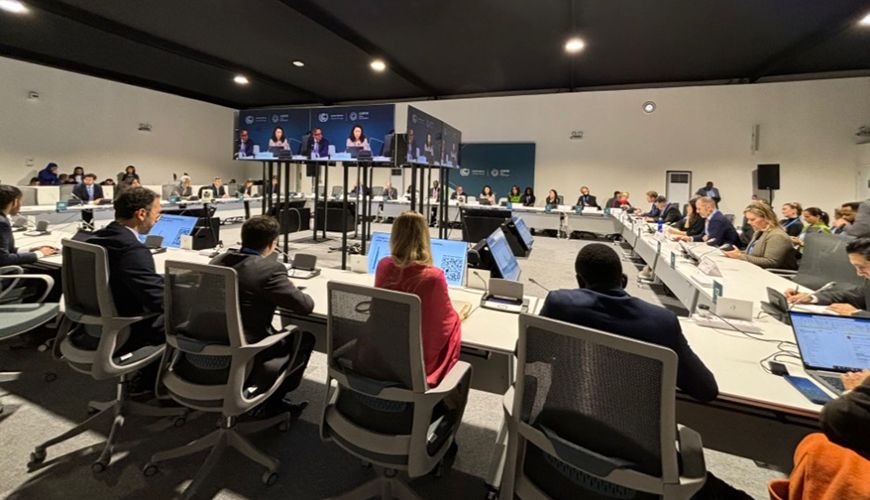Baku to the Future: What COP29 Means for Investors
- The green light from governments for a U.N.-backed carbon credit mechanism represents a recognition of the potential of carbon trading to lower the cost of decarbonization and allocate capital efficiently, provided projects have high integrity.
- The outcomes in Baku are unlikely to change the market’s view of the energy transition, with disparities in policy across regions continuing to create both risks and opportunities for capital allocators.
- The risks of severe-weather events and other climate-driven hazards are intensifying, spurring investors and other capital-markets participants to allocate capital that can enhance the resilience of assets across regions independent of the COP process.
- Requests that countries provide information about authorizations and bilateral agreements up front;
- Sets rules to limit circumstances where countries could reverse the authorization to transfer mitigation outcomes;
- Outlines how the international Article 6.2 registry will function; and
- Provides (limited) provisions to address inconsistencies in countries' approaches to ensuring integrity.
- Creating opportunities for project developers to partner with governments to deliver Article 6.2 deals;
- Enabling the use of carbon credits for international mitigation schemes, such as CORSIA for international aviation, if countries so authorize;[1] and
- Creating added certainty for carbon credit buyers in the Article 6.4 carbon market (because the restriction on revocations in Article 6.2 applies to the PACM as well).
- Sets the high-level standards for carbon credit methodologies and projects;
- Adds further requirements for carbon-removal projects;
- Finalizes Article 6.4's sustainable development tool, which addresses the environmental and social impacts of projects; and
- Provides processes for lodging grievances against projects or appealing decisions made by the PACM authority.
Countries could not agree at COP29 on how to take the energy transition forward. Nor could they affirm their pledge to transition away from fossil fuels in energy systems by midcentury as agreed to last year at COP28 in Dubai. Several countries put forward revised national climate plans at COP29, the first in a series of such blueprints due by February:
- The U.K. unveiled a pledge to reduce greenhouse gas (GHG) emissions by 81% from 1990 levels by 2035.[2]
- Mexico said it aims to increase its share of electricity generated from clean sources to more than 40% by 2035, while reallocating 1% of military spending to reforestation.[3]
- Brazil has pledged to reduce net GHG emissions between 59% and 67% by 2035, compared with 2005 levels.[4]
Countries in Baku also announced new commitments to phase out subsidies for fossil fuels and to halt the building of new coal plants.[5] Much will depend on whether these and other commitments can be realized with concrete domestic policies. Taken together, however, the lack of consensus on fossil fuels alongside the advancements toward a clean-energy economy suggested by some updated climate plans align with both our own analysis and the market's outlook. Investors already anticipate a world in which the energy transition unfolds with significant disparities across regions and sectors, according to a study conducted by the MSCI Institute and our firm's Climate Risk Center on the eve of COP29. Dislocation between political cycles and climate action raises the risk that climate ambitions could be scaled back or delayed in some regions, while accelerating in others. The outcomes in Baku are unlikely to change the market's view. We anticipate that investors will continue to allocate capital by regions and sectors based on the presence of enabling policies, and that disparities in policy across regions will continue to create both risks and opportunities for capital allocators.
It was clear from our conversations in Baku that severe-weather events and climate-driven hazards have risen significantly on the agenda of private-sector finance. A majority of investors in every region say that worsening climate impacts are creating economic fallout sooner than current scenarios anticipate, our study cited above finds. As a result, investments to reinforce resilience to climate-related physical risk are likely to ramp up regardless of decisions reached (or not reached) by countries at climate negotiations. Adaptation is likely to continue to demand funding from governments for investments in climate-resilient infrastructure that serves the public good and protects vulnerable regions. In the meantime, as we heard at a conversation we co-hosted with BCG in Baku, the private sector increasingly sees investment in adaptation and resilience as a necessity for reducing risk. Banks and insurance companies, for example, are accessing location-specific data to sharpen their view of climate-related physical risk. They know that as the climate changes, the hazards change, as do forecasts for economic growth. At the same time, adaptation and resilience is emerging as an investment thesis for investors who seek to capitalize on the demand for products and services that reduce vulnerability to the effects of a warming world. Researchers from the MSCI Institute and investor-led Global Adaptation and Resilience Investor working group, for example, are using artificial intelligence to identify companies in every region that offer technologies or equipment that can help governments, businesses or households prepare for and adapt to the realities of a changing climate. Compared with the political uncertainty that surrounds climate mitigation, the impacts of a changing climate leave little ambiguity — and they're only likely to intensify based on society's current emissions trajectory. Global emissions reached a record 57.1 billion tons last year and are unlikely to fall much between now and 2030, according to the latest U.N. Emissions Gap Report, which finds that current policies would translate to global warming of 3.1 degrees C (5.6 degrees F) above preindustrial levels this century.[6]

Unlocking private investment for climate action in developing countries will demand a range of practical approaches agreed investors, policymakers, academics and representatives of civil society at a forum hosted by the MSCI Institute on Nov. 12, 2024 in the COP29 Blue Zone.
Developed countries agreed at COP29 to scale-up climate aid for their developing counterparts to at least USD 300 billion annually by 2035. Developed-country governments agreed to take the lead in tapping funds from a wide variety of both public and private sources, including multilateral development banks and private investors. While the agreement calls on governments to send clear signals that incentivize private climate capital for emerging markets, we anticipate that the bulk of such investment will continue to come from government-to-government transfers. Though there is, as the agreement at COP29 notes, sufficient global capital to close the investment gap, the challenges in attracting private-sector finance in developing countries, including the cost of capital and the opportunity for private investors, particularly fiduciaries, to achieve the same reward for less risk in developed markets, remain. That's not to suggest that there isn't room for innovation or market-based mechanisms designed to help private capital flow more freely for the energy transition in emerging economies. The enablers envisioned in the agreement on climate finance, including guarantees and support for local-currency funding, might narrow the gap between actual and perceived risks, according to global investors, development finance experts, policymakers and civil-society leaders at a forum convened by the MSCI Institute at COP29. A move toward standardization could help as well, stressed financial institutions in the room. Despite successes with blended finance and other mechanisms designed to enhance the bankability of projects, such mechanisms demand a degree of tailoring that prevents the scaling required to achieve climate goals. The advent of a global carbon market may, in the end, prove to be the biggest enabler of climate action in emerging markets, by adding to the number of developing countries that are already attracting capital for clean-energy projects. Carbon trading at scale can also help to establish a uniform price for carbon that can speed decarbonization while strengthening the ability of low-income countries to benefit from debt-free investment.
Subscribe todayto have insights delivered to your inbox.
The content of this page is for informational purposes only and is intended for institutional professionals with the analytical resources and tools necessary to interpret any performance information. Nothing herein is intended to recommend any product, tool or service. For all references to laws, rules or regulations, please note that the information is provided “as is” and does not constitute legal advice or any binding interpretation. Any approach to comply with regulatory or policy initiatives should be discussed with your own legal counsel and/or the relevant competent authority, as needed.


